Markeith Tero was a student in Cherice Harrison-Nelson’s third grade class almost thirty years ago. He started in long tenure in the Mardi Gras Indian tradition at age 11, learning to sew Indian beadwork. Today, Markeith calls the Guardians of the Flame his “other family.” He oversees the Young Rollers Social Aid and Pleasure Club, a relatively new organization that offers the next generation of culture bearers a chance to partake in second line and Mardi Gras Indian traditions, while also learning the histories behind those traditions. Markeith hopes that his “Young Rollers” will carry the torch of tradition and that he can allow for the Mardi Gras Indians to guide them in the right direction, as the tradition did for him growing up.
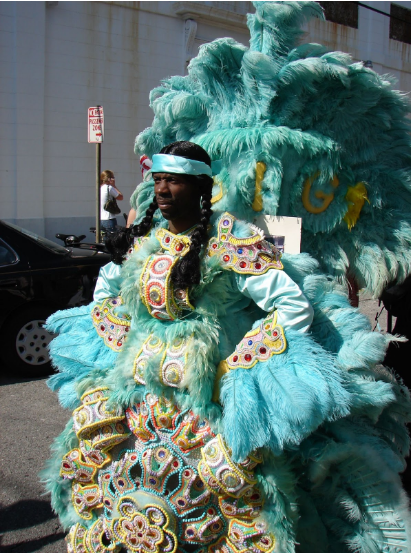
Photo courtesy of Markeith Tero
“[Mardi Gras] Indians to me is like a child, like one of my children that I would try my best to protect it as much as I can. I have a strong love for it and I think that if i would have never gotten involved in the Mardi Gras Indian culture, I could have made some bad decisions and went another different direction, but the Mardi Gras Indian culture really helped me to stay on the right track.”
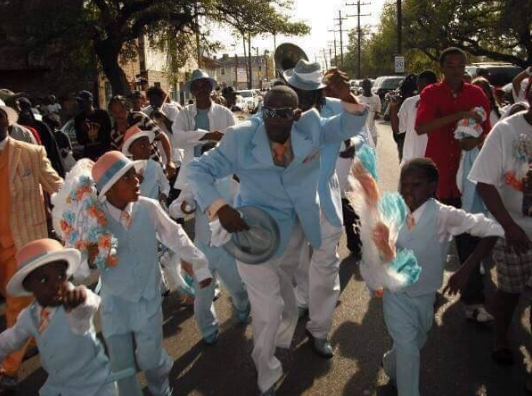
Photo courtesy of Markeith Tero
“As far as the second line culture, that’s my favorite. Once that base drum and that tuba start playing, my feet…I don’t know what jump into my feet and my body, it’s just like I’m break-dancing. It’s as if I’m doing something totally — I’m like ‘Oo, I didn’t know I could do that.” And I did it, man, it’s — y’all have to be there just to see. I’m a totally different person.”
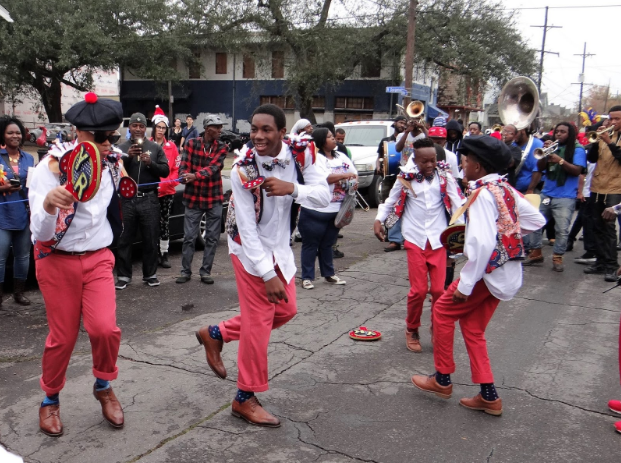
Photo courtesy of Markeith Tero
“[The Young Rollers is] a social club to go and socialize with other people, it’s a pleasure club for the enjoyment, and it’s an aid club to give back to the community. You just can’t just be on the street parading, and you can’t… see your elders and not say good morning or not say good night. Or even just to help them you know go to run to the grocery store for them to pick up the loaf of bread to eat. And I teach them that.”
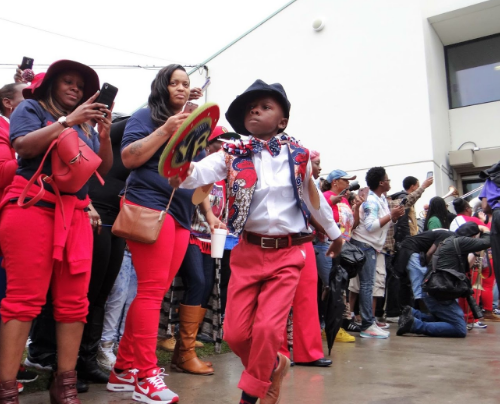
Photo courtesy of Markeith Tero
“I’m a father to them all. I’m a brother to them all. It’s not just about second line with us. We do different things like we sit down and have talks just talking about everyday stuff that happens in the community, in the world, violence, crime, sex, and stuff that’s going on in school…they kind of get off track every now and then and I have to have a one on one with them to try to pull them back on track.”
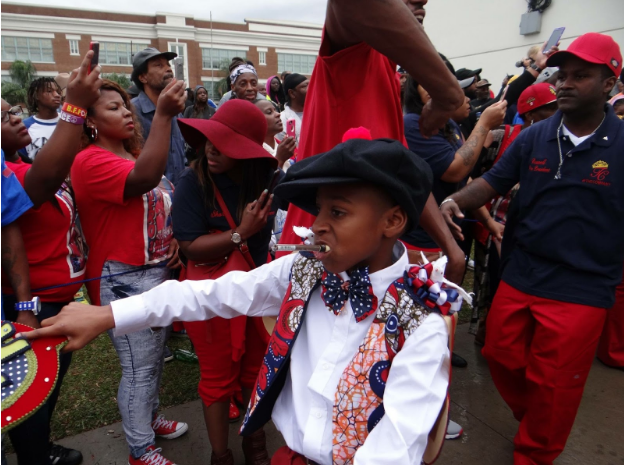
Photo courtesy of Markeith Tero
“You have to know these things because when the elders are all dead and gone you guys are the ones that are gonna keep the tradition going and you must stay focused and keep the right positivity because there’s always …somebody watching in your neighborhood or in your school saying that ‘I wanna be like this person’ and the minute you make that bad mistake they’re going to think that it’s good to make that bad mistake too.”
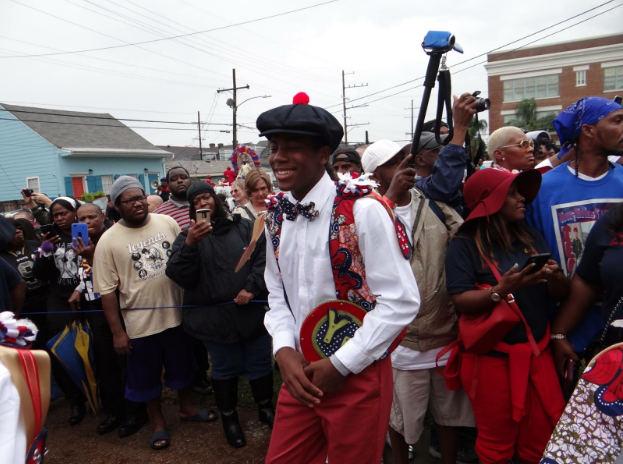
Photo courtesy of Markeith Tero
“It’s more than just being a Mardi Gras Indian and there’s more to life than making the Indian costume. One, you have to have the education and do what your parents tell you to you to do. If you can’t do that, it doesn’t matter if you’re a Mardi Gras Indian at all.”
All photos are courtesy of Markeith Tero.
To view the overview of this three-part project on the Mardi Gras Indian cultural traditions, click here. You can also view our segments featuring the past and present.
 New Orleans Startups
A brief overview of the growing New Orleans startup scene. This piece highlights the main industries of New Orleans, competing cities, and just how emerging the current entrepreneurial/startup scene is in New Orleans.
New Orleans Startups
A brief overview of the growing New Orleans startup scene. This piece highlights the main industries of New Orleans, competing cities, and just how emerging the current entrepreneurial/startup scene is in New Orleans.
 A Bin in Every Classroom: Why Tulane Should Lead on Composting
I asked a peer, Isabel, for her thoughts on composting: “Why do...
Tulane
A Bin in Every Classroom: Why Tulane Should Lead on Composting
I asked a peer, Isabel, for her thoughts on composting: “Why do...
Tulane